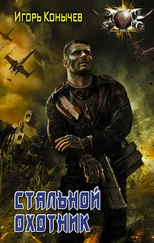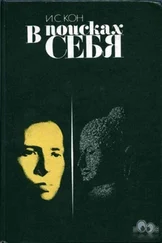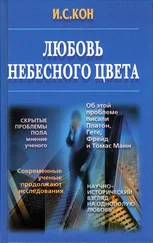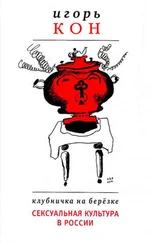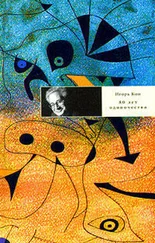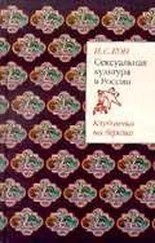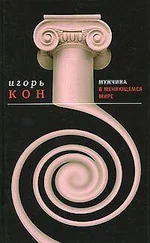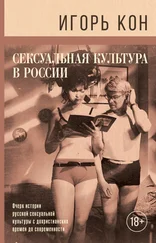MacMillan H. L., Boyle М. H., Wong M. Y., Duku E. K., Fleming J. E., Walsh C. A. Slapping and spanking in childhood and its association with lifetime prevalence of psychiatric disorders in a general population sample // Canadian Medical Association Journal. 1999. Vol. 161. № 7. P. 805–809 (PMC: 1230651. http://www.cmaj.ca/cgi/pmidlookup? view=long&pmid=10530296).
Mahoney A., Donnelly W. O., Lewis Т., Maynard C. Mother and father self-reports of corporal punishment and severe physical aggression toward clinic-referred youth // J Clin Child Psychol. 2000. Vol. 29. № 2. P. 266–281.
McLoyd V. C., Smith J. Physical discipline and behavior problems in African American, European American, and Latino children: Emotional support as a moderator // Journal of Marriage and the Family. 2002. Vol. 64. Issue 1. P. 40–53.
Meadows S. O., McLanahart S. SBrooks-Gunrt J. Parental depression and anxiety and early childhood behavior problems across family types // J Marriage Fam. 2007. Vol. 69. № 5. P. 1162–1177.
Middleton J. Thomas Hopley and Mid-Victorian attitudes to corporal punishment // History of Education. 2005. Vol. 34. № 6. P. 599–615.
Miethe, Terance D., Hong Lu. Punishment: A Comparative Historical Perspective. Cambridge University Press, 2005.
Miller A. Taibatsu: “corporal punishment” in Japanese socio-cultural context // Japan Forum. 2009. Vol. 21. № 2. P. 233–254.
Moser C., Levit E. An exploratory-descriptive study of sadomasochistically oriented sample // Journal of Sex Research. 1987. Vol. 23. № 3. P. 322–337.
MusilA. The Manners and Customs of Rwala Bedouins. N. Y., 1928.
Nevill R. Floreat Etona: Anecdotes and Memories of Eton College. London: Macmillan, 1911.
Noll J. G. Does childhood sexual abuse set in motion a cycle of violence against women? // J Interpers Viol. 2005. № 4. P. 455–462.
Norwood C. The English Tradition of Education. L.: John Murray, 1929.
Paolucci E. O., Violato C. A meta-analysis of the published research on the affective, cognitive and behavioral effects of corporal punishment // Journal of Psychology. 2004. Vol. 138. P. 197–221.
Petersen L.R., Lee G. R.y Ellis G. J. Social structure, socialization values, and disciplinary techniques: A cross-cultural analysis // Journal of Marriage and the Family. 1982. Vol. 44. № 1. P. 131–142.
Plante R. F. Sexual spanking, the self, and the construction of deviance // Journal of Homosexuality. 2006. Vol. 2/3. P. 59–79.
Pollard D. Banning child corporal punishment // Tulane Law Review. 2003. Vol. 77. P. 575–657.
Pour ou contre les fessees? l’enquete de l’Union des Families en Europe, 2007 // http://www.uniondesfamilles.org/enquete-fessees.htm.
Quortrup J. Childhood as a Social Phenomenon // An Introduction to a Series of National Reports: Eurosocial Reports. Vol. 36.Vienna, 1991.
Raven S. The Old School: A Study in the Oddities of the English Public School System. L.: Hamish Hamilton, 1986.
Richters J., de Visser R. O., Rissel С. E., Grulich A. E., Smith A. M. A. Demographic and psychosocial features of participants in bondage and discipline, “sadomasochism” or dominance and submission (BDSM): Data from a national survey // Journal of Sexual Medicine. 2008. Vol. 5. P. 1660–1668.
Ripoll-Nilnez К JRohner R. P. Corporal punishment in cross-cultural perspective: Directions for a research agenda // Cross-Cultural Research. 2006. Vol. 40. P. 220–249.
Rohner R. P. They Love Me, They Love Me Not: A Worldwide Study of the Effects of Parental Acceptance and Rejection. New Haven: HRAF, 1975.
Rohner R. P. The Warmth Dimension. Beverly Hills, CA: Sage, 1986.
Rohner R. P. Physical Punishment Questionnaire. 2001 (Available from Rohner Research Publications, 255 Codfish Falls Road, Storrs, CT 06268)
Rohner R. P. Glossary of significant concepts in parental acceptance rejection theory (PARTheory). Retrieved January 16, 2005 // www.cspar.uconn.edu.
Rohner R. P. Preface // Cross-Cultural Research. 2006. Vol. 40. No. 3. P. 215–219.
Rooksby R. A. C. Swinburne: A Poet’s Life. London: Scolar Press, 1997.
Sandnabba N., Santtila P., Nordling N. Sexual behavior and social adaptation among sadomasochistically oriented males // Journal of Sex Research. Vol. 36. P. 273–282.
Schlack R., Holling H. GewalterfahrungenvonKindernund Jugendlichen im subjektiven Selbstbericht. Erste Ergebnisse aus dem Kinder– und Jugendgesundheitssurvey (KiGGS). Bundesgesundheitsblatt Gesundheitsforschung Gesundheitsschutz. 2007. B. 50. H. 5/6. S. 819–826.
Schoebi D., Perrez M. Bestrafungsverhalten von Erziehungsberechtigten in der Schweiz. Eine vergleichende Analyse des Bestrafungsverhaltens von Erziehungsberechtigten 1990 und 2004. (Forschungsbericht z Hd. Bundesamt fuer Sozialversicherung). Fribourg: Department of Psychology. 2004 // www.rwi.uzh.ch/elt-lst-buechler/famr/kindesschutz/de/pdf/pdf4.pdf.
Schoolland K. Shogun’s Ghost: The Dark Side of Japanese Education. Greenwood Press, 1990.
Schrader A. M. Languages of the Lash: Corporal Punishment and Identity in Imperial Russia. Illinois Univ.Press, 2002.
Schumann D. Legislation and liberalization: The debate about corporal punishment in schools in postwar West Germany, 1945–1975 // German History. 2007. Vol. 25. № 2. P. 192–218.
Shimoda T. Representations of parenting and gender roles in the Shoshika era: Comparisons of Japanese and English-language parenting magazines // Electronic journal of contemporary japanese studies. 2008. Article 1 (http://www.japanesestudies.org.uk/articles/2008/Shimoda.html).
Shwalb D. W., Nakazawa J., Yamamoto T., Hyun J.-H. Fathering in Japan, China, and Korea: Changing contexts, images, and roles // The Role of the Father in Child Development. 5th Edition / Michael E. Lamb, ed. N. Y.: Wiley, 2010. P. 341–388.
Simons D. A., Wurtele S. K. Relationships between parents’ use of corporal punishment and their children\'s endorsement of spanking and hitting other children // Child Abuse & Neglect. 2010. Vol. 34. Issue 9. P. 639–646.
Slade E. PWissow L. S. Spanking in early childhood and later behavior problems: A prospective study of infants and young toddlers // Pediatrics. 2004. Vol. 113. P. 1321–1330.
Smith C., Thornberry T. P. The relationship between childhood maltreatment and adolescent involvement in delinquency // Criminology. 1995. Vol. 33. P. 451–481.
Sommerville C. J. The Rise and Fall of Childhood. Beverly Hills, Calif.: Sage Publication, 1982.
Steinberg S., Kruckman L., Steinberg S. Reinventing fatherhood in Japan and Canada // Social Science and Medicine. 2000. Vol. 50. № 9. P. 1257–1272.
Stoller R. J. Pain and Passion: A Psychoanalyst Explores the World of S & M. NY: Plenum Press, 1991.
Stone L. The Family, Sex and Marriage in England. N. Y.: Harper, 1979.
Straus M. A. Spanking and the making of a violent society // Pediatrics. 1996. Vol. 98 (4S). P. 837–842.
Straus M. A. Beating the Devil out of Them: Corporal Punishment in American Families and Its Effects on Children. New Brunswick, New Jersey: Transaction Publishers, 2001.
Straus M. A. Corporal punishment and academic achievement scores of young children: A longitudinal study // The Primordial Violence: Corporal Punishment by Parents, Cognitive Development, and Crime / M. A. Straus, ed. Walnut Creek, С A: AltaMira Press, 2003.
Straus М. A. Corporal punishment of children and sexual behavior problems: Results from four studies. Presented at the American Psychological Association Summit Conference On Violence And Abuse In Interpersonal Relationship, Bethesda, Maryland 28 February 2008.
Читать дальше
Конец ознакомительного отрывка
Купить книгу

